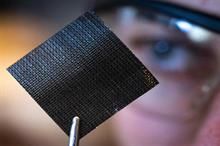
Current textile electronic systems often rely on rigid silicon components, which limits seamless integration, energy efficiency and comfort. Chipless electronic systems still face digital logic challenges owing to the lack of dynamic energy-switching carriers.
In the 4 April issue of the journal ‘Science’, the team proposed a chipless body-coupled energy interaction mechanism for ambient electromagnetic energy harvesting and wireless signal transmission through a single fibre.
The fibre itself enables wireless visual–digital interactions without the need for extra chips or batteries on textiles, the abstract of the paper in the journal said.
As all electronic assemblies are merged in a miniature fibre, it facilitates scalable fabrication and compatibility with modern weaving techniques and enables versatile and intelligent clothing.
Textiles from the fibre can realise human-computer interaction functions like luminous display and touch control without chips and batteries.
Clothes made of the new fibres can be interactive and luminous, and can also remotely control electronic products by generating unique signals for different postures of users.
“The fibres light up in response to touch because they use the human body as part of a circuit that harvests ambient electromagnetic energy. The fibres are easy to fabricate, soft, and can be made into fabric of various sizes. The authors show the potential for wireless digital interactions with a number of simple examples,” commented Brent Grocholski, senior editor for physical science at the journal.
Fibre2Fashion News Desk (DS)

